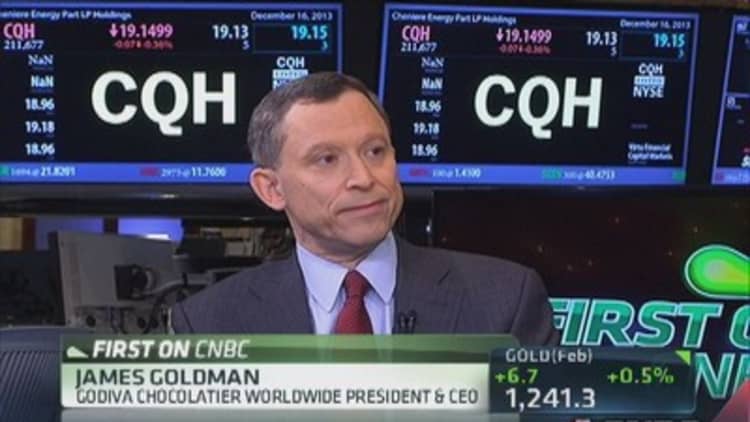
, the second-best performing commodity of 2013, looks set to take first place this year thanks to a supply-driven squeeze engineered by the world's top producers, according to Singapore-based brokerage Phillip Futures.
Cocoa closed out the year with gains of 26 percent, just one step behind the 27 percent rise of 2013 winner natural gas, on concerns of a global supply deficit and rising demand for the commodity that is used to make chocolate.
In the firm's 2014 agricultural commodities outlook, Phillip Futures attributed the run-up in prices to dry, unfavorable weather conditions for crop supply in the Ivory Coast and Ghana, the largest cocoa growers in the world.
(Read more: Raisin the bar: Chocolate's ingredients get harder to come by)
While cocoa futures kicked off 2014 nearly 3 percent lower at a more than seven-week low due to replenished supply from West-African harvests, Phillip Futures' senior commodities manager told CNBC that he believes a structural change will fundamentally change the cocoa market this year.
(Read more: Cravinga chocolate fix? Prepare to pay more)
"Cote d'Ivoire farmers used to grow cocoa but now they find that it's better to grow palm oil and rubber instead, as they provide income throughout the year whereas cocoa only provides income when you get a harvest," said Avtar Sandhu.
The brokerage expects the trend of reduced output, combined with robust consumption, to pave the way for solid cocoa gains this year.

Worldwide chocolate sales are expected to gain 2 percent in 2014, with Asian sweet tooth cravings expected to outperform global demand by an annual 5 percent, according to market research firm Euromonitor.
(Read more: Sugar rush! Chocolate stocks soar this Halloween)
Phillip analysts also pointed out that current, elevated cocoa-butter-ratios reflect strong consumption trends in North American, Asian and European markets.
Sandhu expects a cocoa deficit of 200,000 tons this year on the back of rising demand.
Meanwhile, the International Cocoa Organization (ICCO) said last month that it expects demand to exceed production by 70,000 metric tons for the season that began in October.
(Read more: The Chocolate Indicator: Using Hershey to Predict the Market)
The body believes the output deficit could continue through to 2018, which would be the longest streak since the organization started gathering data.
"It is unlikely that the cocoa market will see the light at the end of the tunnel anytime soon as demand is expected to grow while production remains sluggish, further worsening the supply deficit situation. The high likelihood that global cocoa supplies are unable to meet demand will be a significant source of support to the cocoa market," Phillip Futures said in their report.
— By CNBC.com's Nyshka Chandran. Follow her on Twitter @NyshkaCNBC

